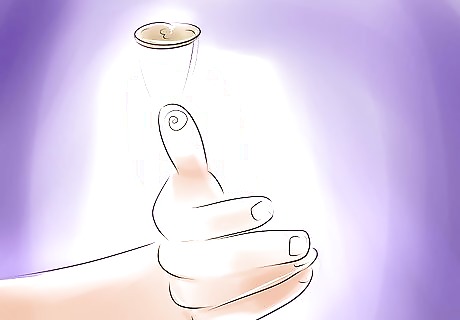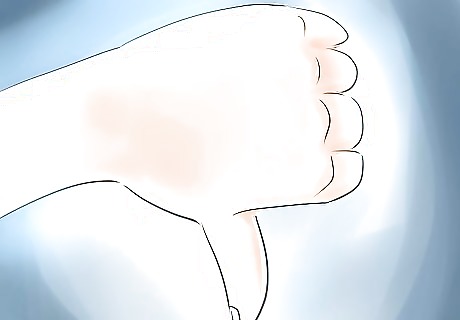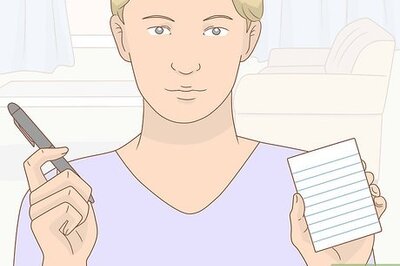
views
Understanding what a British Parliamentary Debate is

Organize FOUR teams of TWO people. these sides are called "government" and "opposition" or "proposition" and "opposition". Government is supporting the topic given and opposition is opposing it.

Decide which team gets to get to pick a topic or side. This is generally done by a coin toss and the winner will get preference over choosing the topic or the side. With two teams per side, you will be versing not only your side's opposition, but also the other government team.

There are generally 3 topics and 2 sides. The topics are random and the government is supporting the topic given whilst the opposition is opposing it. The topic will always request government to argue for a change (an argument to change something that currently exists), while opposition will argue against the change. Another type of motion does not require a change. This motion will have the word "believe" in it. In fig.2 the government defends a view or belief while the opposition opposes it.

Prepare for your debate. You and a partner receive your topic around 10 minutes before the debate begins. You have these few minutes to prepare your speeches. This is often very nerve-wracking, so it is important to remain cool, calm and collected during this time in order to put together the best case possible.

Make Points of Information. Points of information can be given to the opposing side when they are speaking. This is in the form of a question, and cannot last more than 15 seconds. Be careful not to offer them more than every 15 seconds as this is called "barracking" and is perceived as extremely rude.

Respect the protected time. For every debate, the first and last minute are protected time, where you cannot make any Points of Information.
How to argue in a British Parliamentary Debate

The opening teams from each side debate. There will be two opening teams - the Opening Government and the Opening Opposition.

The 'Prime Minister' speaks first. This will be one person on the side of the government, and they must define every important term in the topic. These terms be must defined carefully, because should they fail to do so in the introduction, the side opposition may define those terms in any way that best suits it. (i.e., define the house, define the meaning of the resolution, etc.) The Prime Minister will also introduce any contentions (points you wish to use to prove your case) they wish to do. It is imperative that the Prime Minister sets a clear and narrow resolution so that the debate is focused and no too broad. The time limit is generally 5 minutes.

The Leader of Opposition speaks. One person on the side of opposition, called the Leader of the Opposition, must refute (prove incorrect) every contention the Prime Minister just made and introduce any contentions they wish to do so. The time limit is generally 5 minutes.

The Deputy Prime Minister speaks. One person on the side of government, called the Deputy Prime Minister, must refute every contention the Leader of the Opposition just introduced and rebuild (re-prove) the Prime Minister's contentions whilst introducing any additional contentions they wish to introduce. The time limit is generally 5 minutes.

The Deputy Leader of the Opposition speaks. One person on side opposition, called the Deputy Leader of the Opposition, must refute every contention of side government, rebuild all of side opposition's contentions and introduce any additional contentions they wish to add. Sometimes, it may be against the rules to introduce new contentions in this speech in the last 5 minutes of the speech. It is also a good idea to summarize all the points of the opening opposition (the Leader of Opposition and their own points) in this speech, as the Leader of the Opposition is the last person of their side to speak. The time limit is generally 8 minutes.

The closing sides now debate. These two must debate their closing arguments for and against whilst strengthening their team member's points.

The Member of Government now speaks. They must present an extension to the debate that was done by the opening sides. That is to say, They must open a new side about the issue. This is 5 minutes.

The Member of Opposition now speaks. They want to refute the points of the Member of Government, as well as bring in another extension. This is 5 minutes.

The Government Whip speaks. They have to refute the points of the Member of Opposition. Then, they have to sum up the debate and crystallize it to some main points. This speaker may not bring in ANY new points/extensions/case studies. This is 5 minutes. The whip speeches are very important, and it may seem that they have nothing to do during prep time, but they should always be thinking about their case as a whole.

The Opposition Whip is the last speaker in the debate. They will refute, but may not introduce new contentions. Lastly, they should summarize all the contentions made by his/her side and possibly provide mention what the debate was mainly about. They are to do the same thing as the Government Whip. This is 5 minutes. Whip speeches are like a biased newspaper report; they lay out their arguments in a way that makes it look like their team has won the whole debate.



















Comments
0 comment